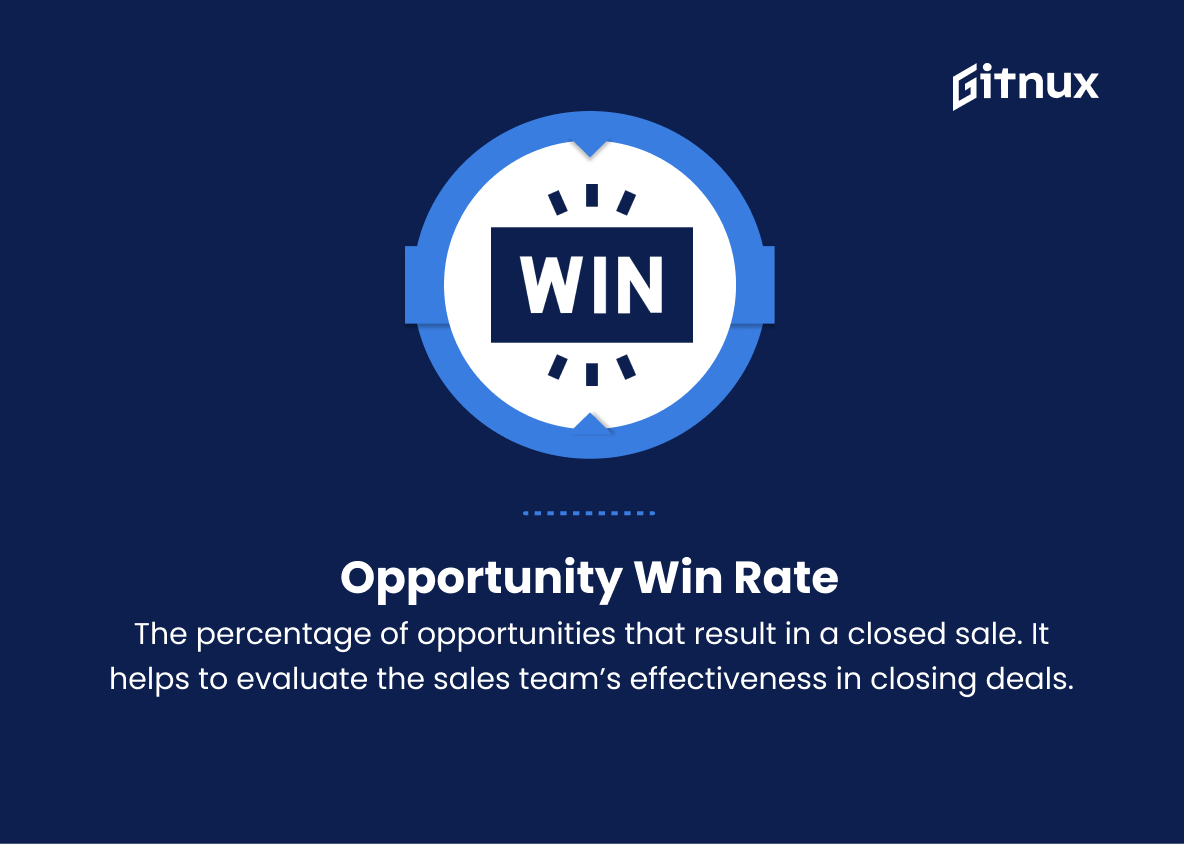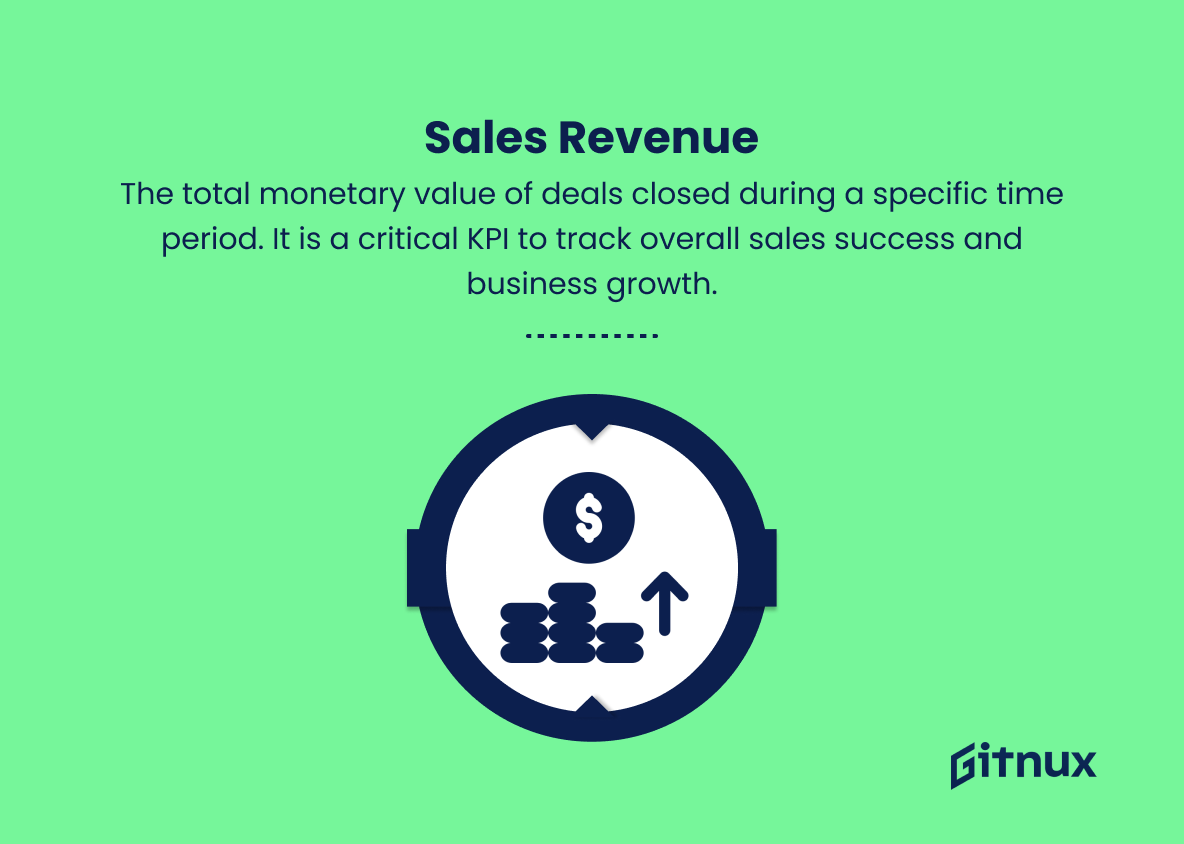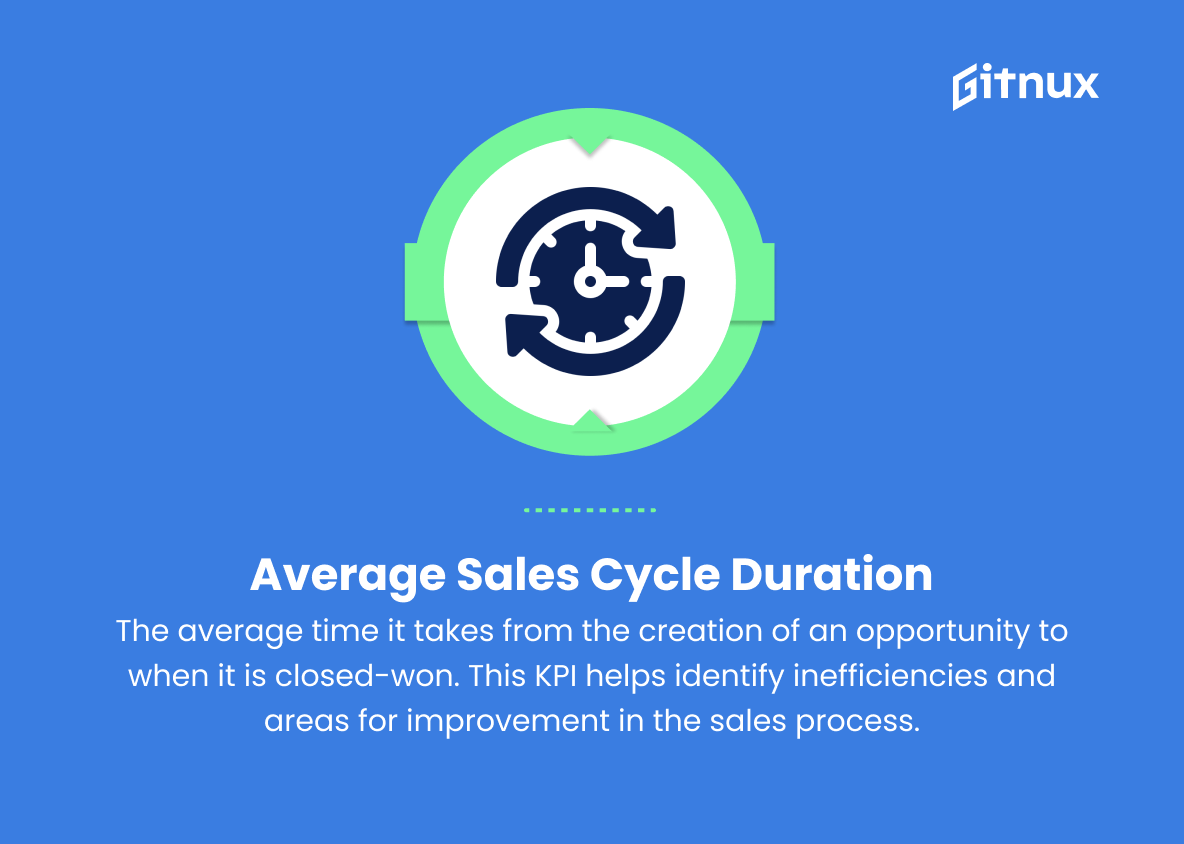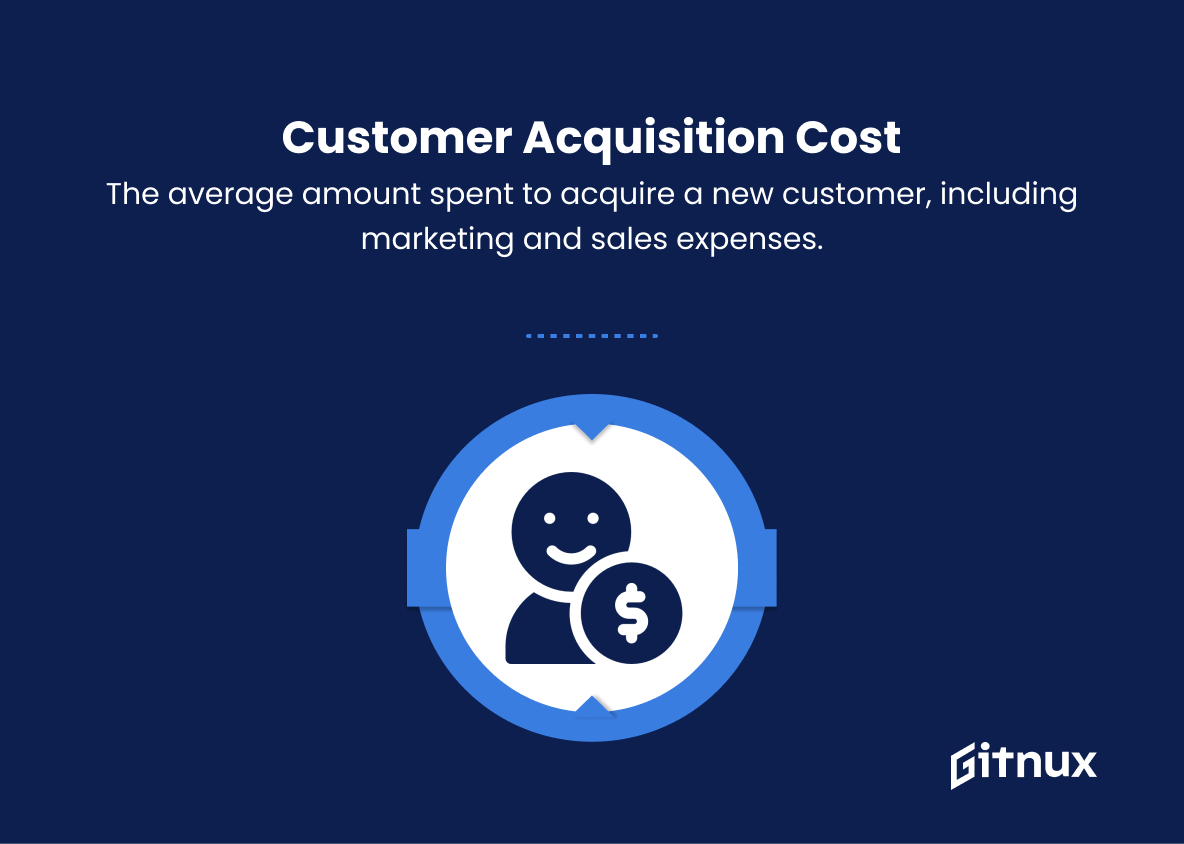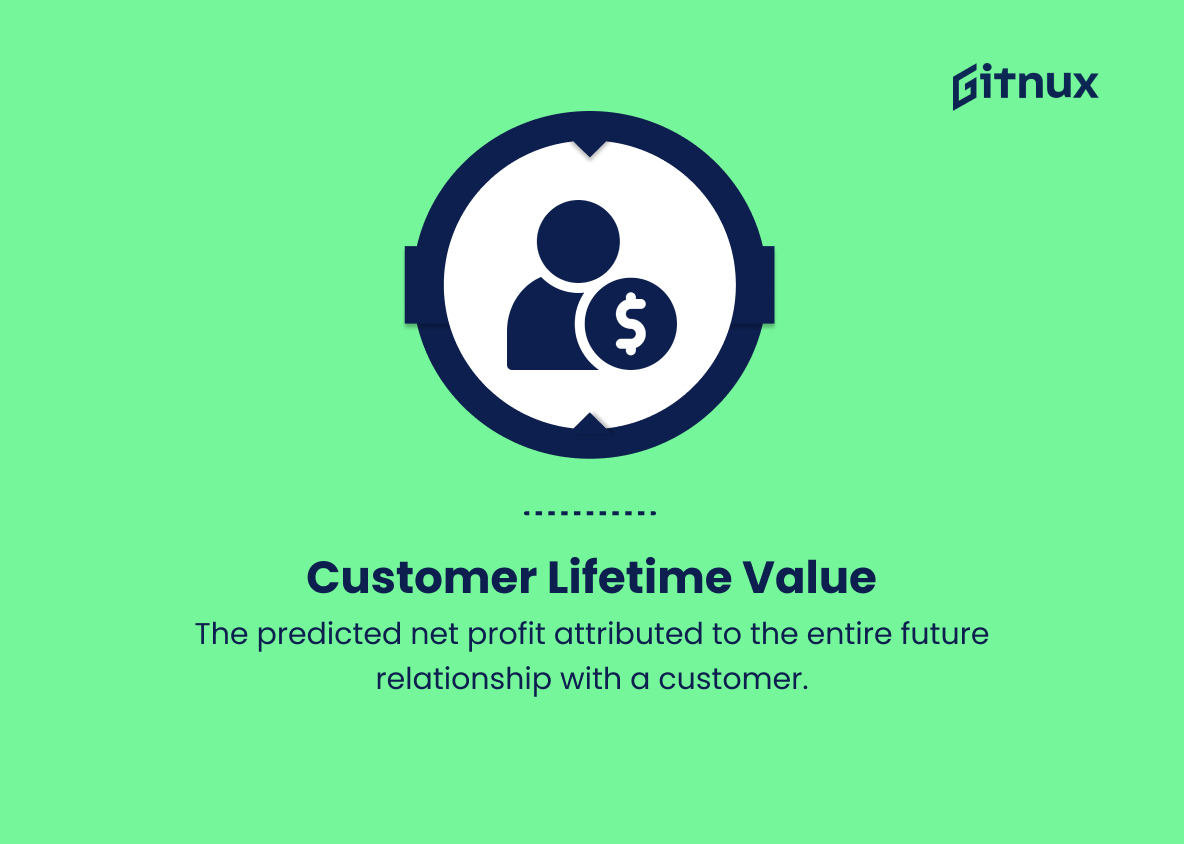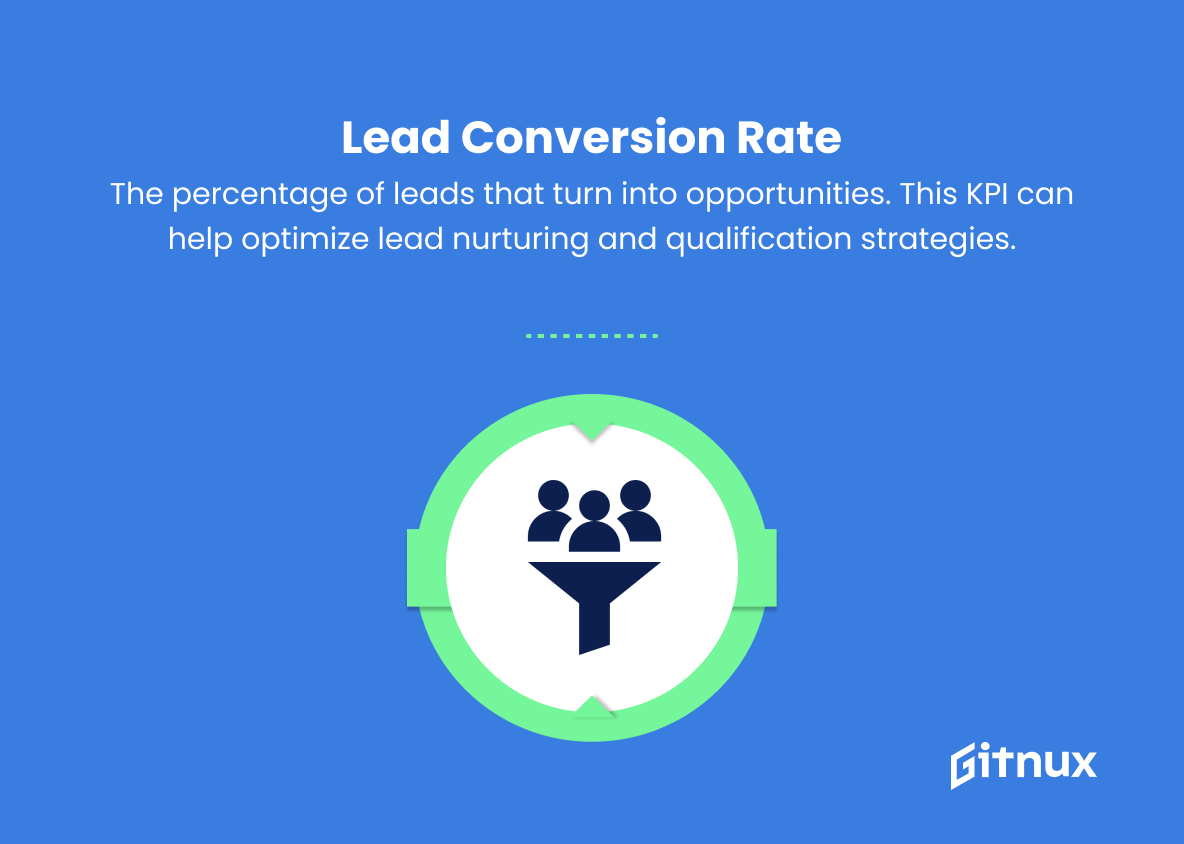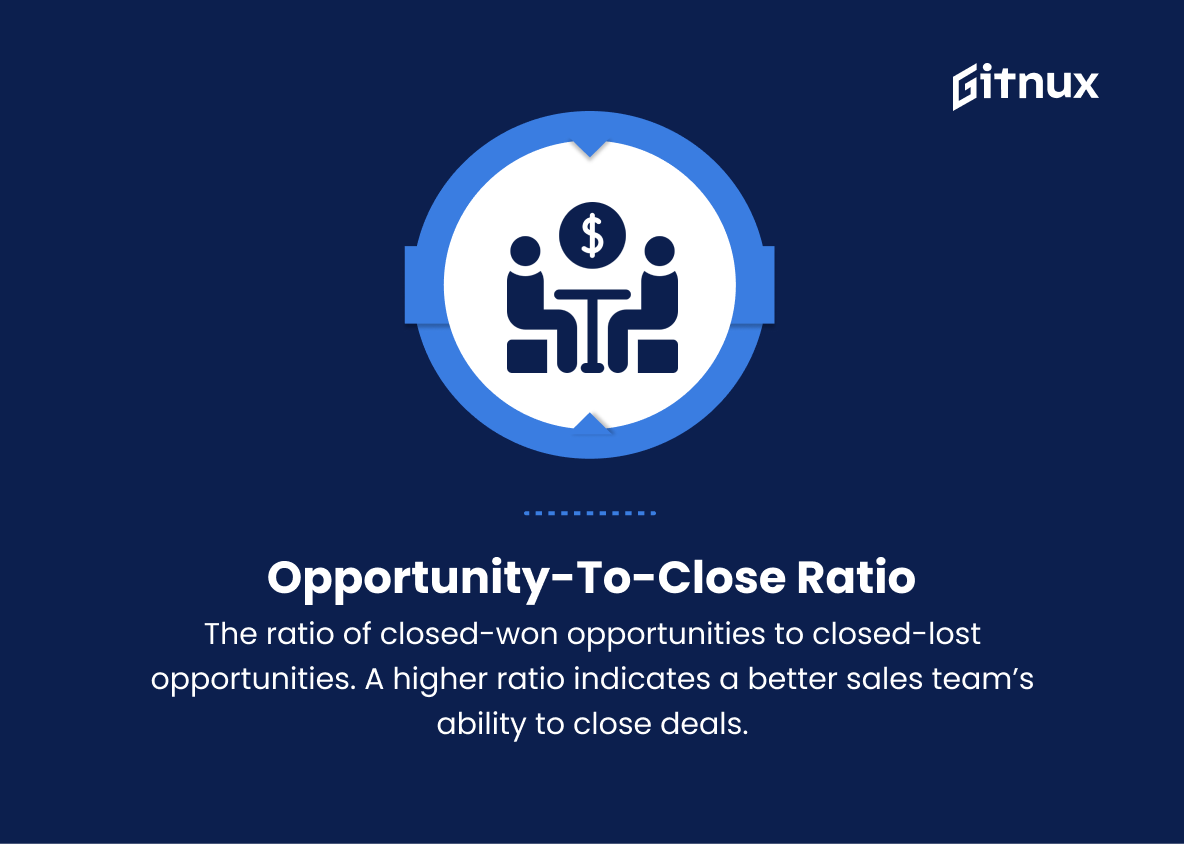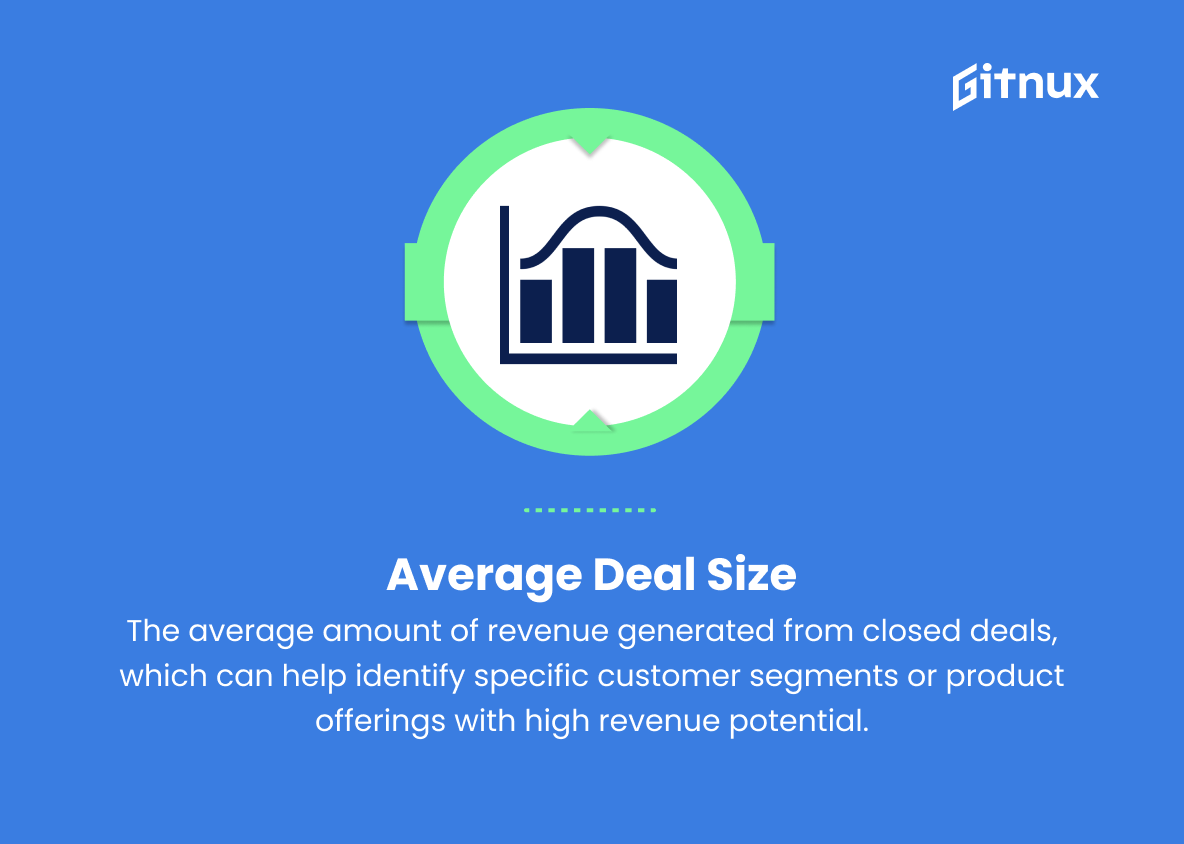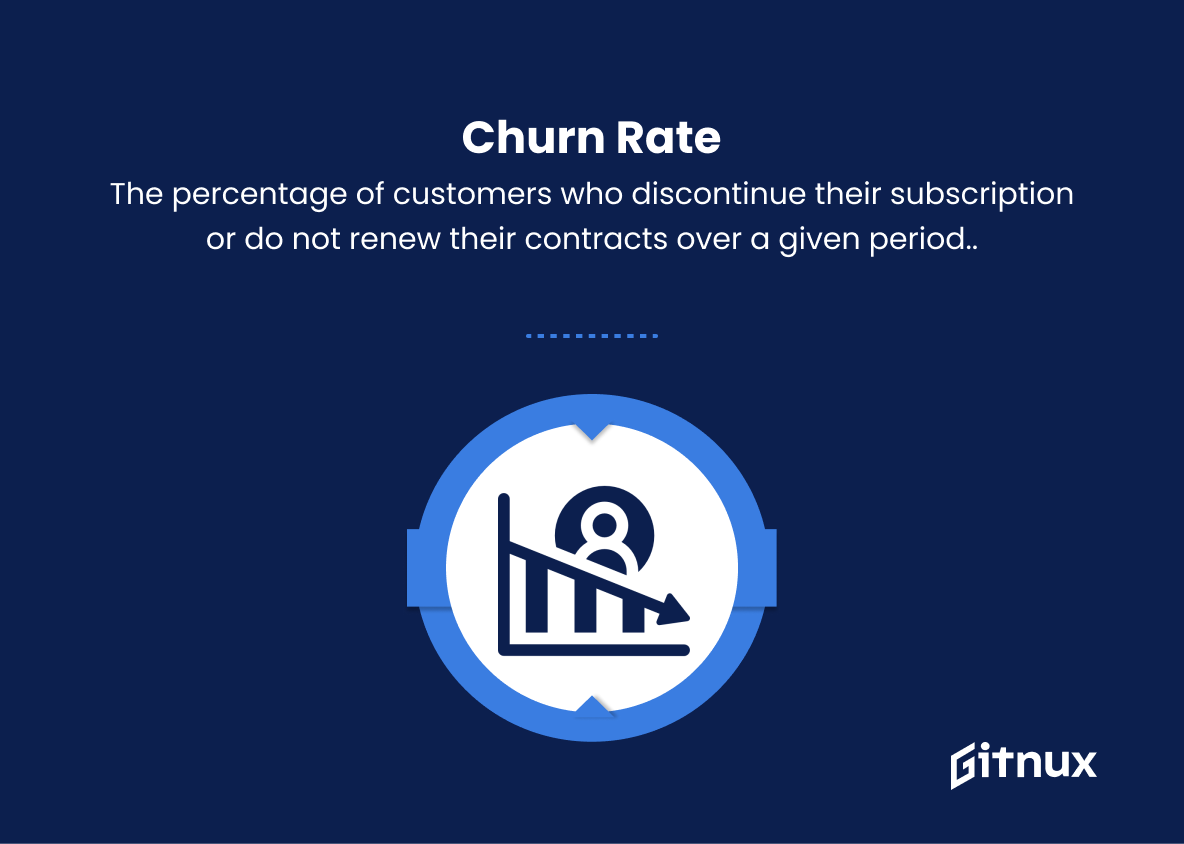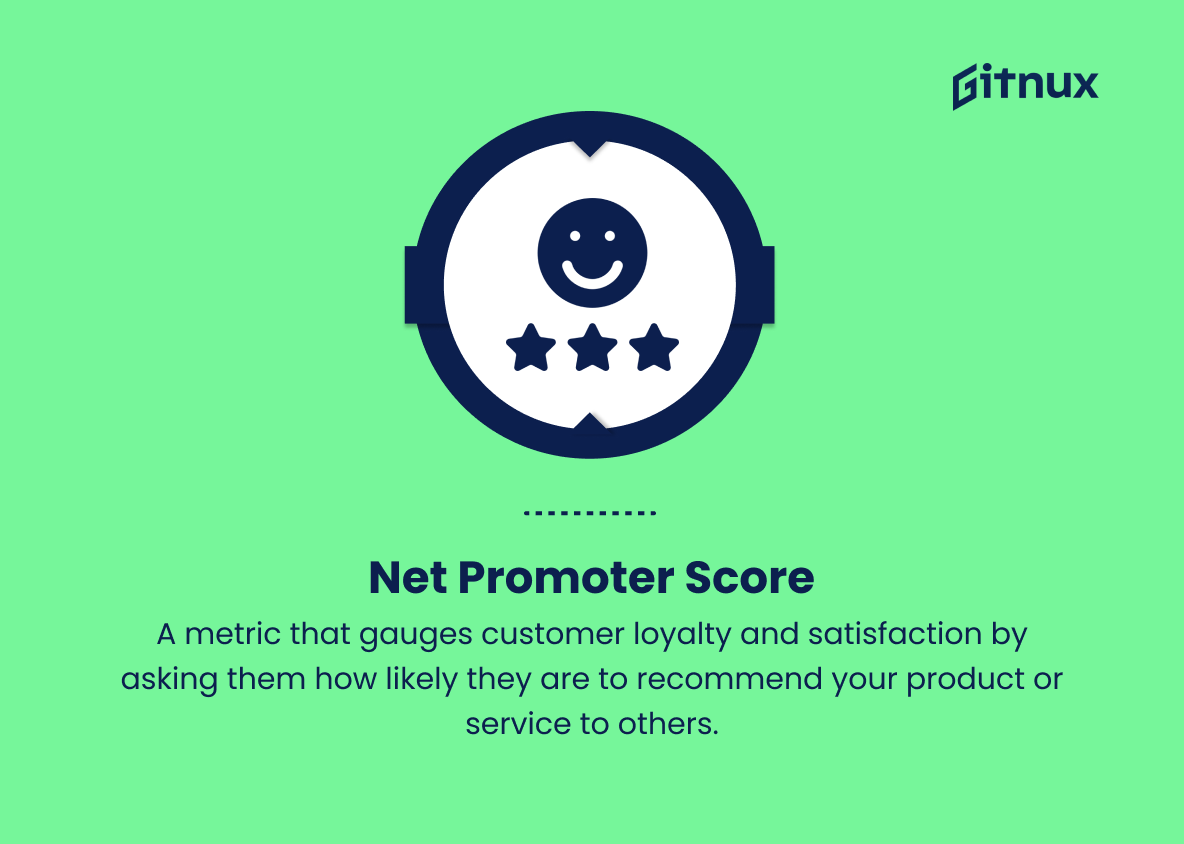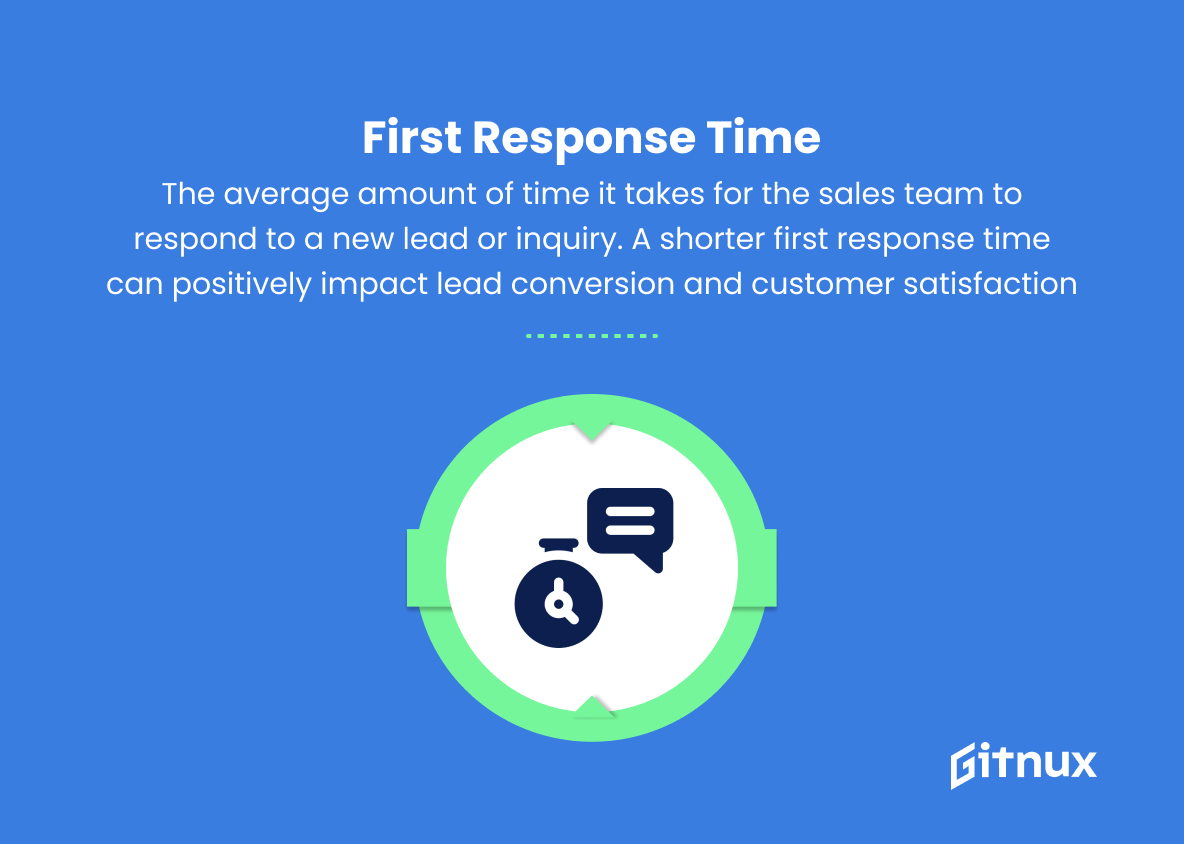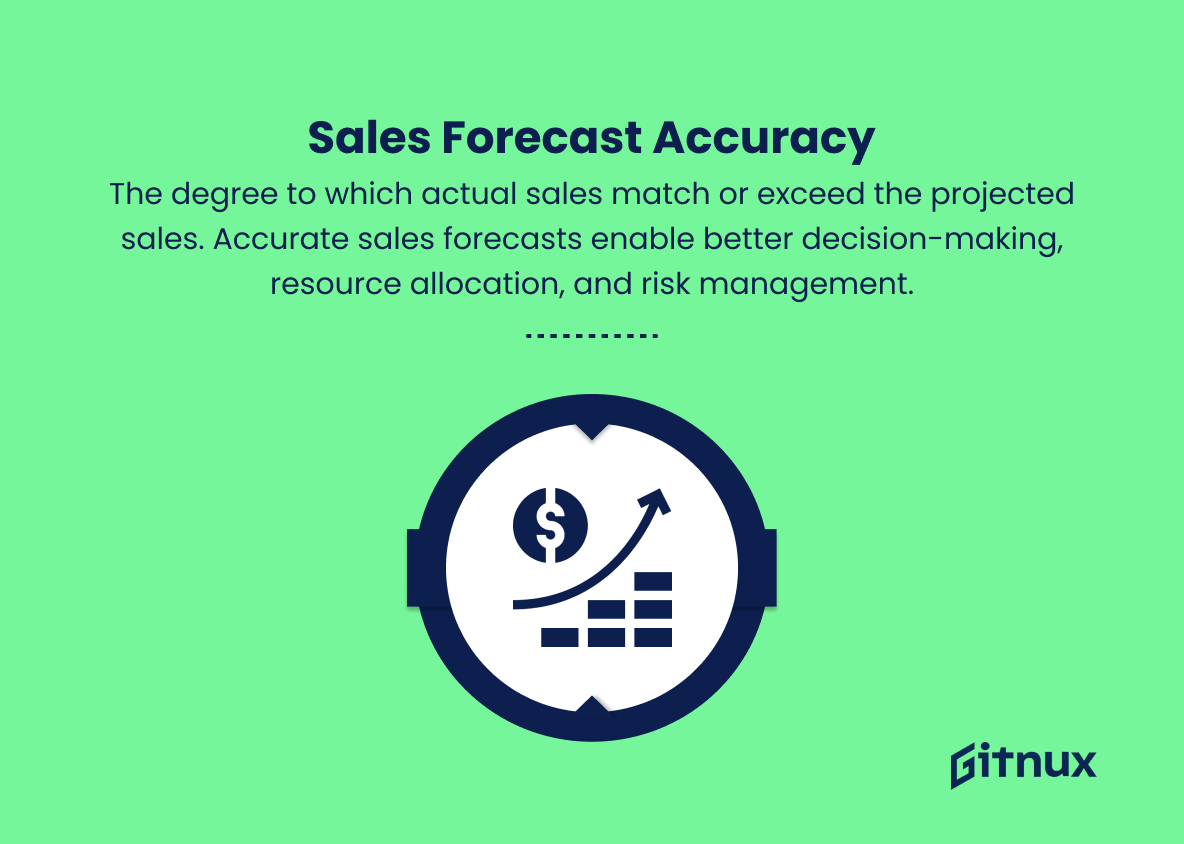In today’s increasingly competitive business landscape, organizations are constantly seeking ways to optimize their sales processes, enhance collaboration, and drive overall revenue growth. Understanding and utilizing the right Salesforce Key Performance Indicators (KPIs) becomes essential in evaluating and improving the efficiency of your sales operations.
In this blog post, we will delve deep into the world of Salesforce KPIs, exploring their significance, their potential impact on your organization’s success, and how to effectively track and analyze them to ensure peak performance and informed decision-making. So, join us as we embark on this insightful journey, empowering your sales teams and fine-tuning your sales strategies for sustained success.
Salesforce KPIs You Should Know
1. Opportunity Win Rate
The percentage of opportunities that result in a closed sale. It helps to evaluate the sales team’s effectiveness in closing deals.
2. Sales Revenue
The total monetary value of deals closed during a specific time period. It is a critical KPI to track overall sales success and business growth.
3. Average Sales Cycle Duration
The average time it takes from the creation of an opportunity to when it is closed-won. This KPI helps identify inefficiencies and areas for improvement in the sales process.
In today’s increasingly competitive business landscape, organizations are constantly seeking ways to optimize their sales processes, enhance collaboration, and drive overall revenue growth.4. Customer Acquisition Cost (CAC)
The average amount spent to acquire a new customer, including marketing and sales expenses. It helps determine the profitability and scalability of a sales and marketing strategy.
5. Customer Lifetime Value (CLV)
The predicted net profit attributed to the entire future relationship with a customer. It helps businesses focus on acquiring customers with high lifetime value and improving customer retention.
6. Lead Conversion Rate
The percentage of leads that turn into opportunities. This KPI can help optimize lead nurturing and qualification strategies.
7. Opportunity-to-Close Ratio
The ratio of closed-won opportunities to closed-lost opportunities. A higher ratio indicates a better sales team’s ability to close deals.
Understanding and utilizing the right Salesforce Key Performance Indicators (KPIs) becomes essential in evaluating and improving the efficiency of your sales operations.8. Quarterly Sales Target Achievement
The percentage of the sales target achieved during a specific time period, such as a quarter. This KPI helps evaluate the performance of the sales team in meeting their objectives.
9. Average Deal Size
The average amount of revenue generated from closed deals, which can help identify specific customer segments or product offerings with high revenue potential.
10. Churn Rate
The percentage of customers who discontinue their subscription or do not renew their contracts over a given period. A high churn rate may indicate customer dissatisfaction or unhappiness with the product or service.
11. Net Promoter Score (NPS)
A metric that gauges customer loyalty and satisfaction by asking them how likely they are to recommend your product or service to others. High NPS indicates satisfied customers and potential for strong word-of-mouth marketing.
12. First Response Time
The average amount of time it takes for the sales team to respond to a new lead or inquiry. A shorter first response time can positively impact lead conversion and customer satisfaction.
13. Sales Team Productivity
The ratio of total sales revenue to the number of sales team members. This KPI helps assess the efficiency and effectiveness of the sales team and its sales representatives.
14. Sales Forecast Accuracy
The degree to which actual sales match or exceed the projected sales. Accurate sales forecasts enable better decision-making, resource allocation, and risk management.
15. Upsell/Cross-sell Rate
The percentage of customers who purchase additional products or services (upsells) or complementary products and services (cross-sells) when making a purchase. This KPI is essential in assessing the success of additional sales efforts and increasing customer lifetime value.
Salesforce KPIs Explained
Salesforce KPIs are essential in evaluating the performance, efficiency, and effectiveness of sales teams and overall business growth. Opportunity Win Rate measures the sales team’s ability to close deals, while Sales Revenue reflects overall sales success. Metrics like Average Sales Cycle Duration, Customer Acquisition Cost (CAC), and Customer Lifetime Value (CLV) help identify areas for improvement and optimize strategies.
Furthermore, Lead Conversion Rate, Opportunity-to-Close Ratio, and Quarterly Sales Target Achievement assess sales team performance and the success of lead nurturing. Average Deal Size and Churn Rate can identify high-potential customer segments and customer satisfaction levels. Net Promoter Score (NPS) gauges customer loyalty and satisfaction, while First Response Time impacts lead conversion and satisfaction.
Additionally, Sales Team Productivity, Sales Forecast Accuracy, and Upsell/Cross-sell Rate assess the efficiency of the sales team, accurate decision-making, and the success of additional sales efforts in increasing customer lifetime value.
Conclusion
In conclusion, Salesforce KPIs play a crucial role in determining the success and effectiveness of a business’s sales and customer relationship management strategies. By tracking and analyzing these key performance indicators, organizations can identify areas of improvement, streamline their sales processes, and enhance customer satisfaction.
Whether it’s developing a deeper understanding of your customer base or increasing lead conversion rates, mastering Salesforce KPIs will ultimately lead to a stronger, more profitable business. Stay committed to monitoring, evaluating, and adapting your Salesforce strategies in response to your KPIs, and your business will thrive in the competitive landscape.
